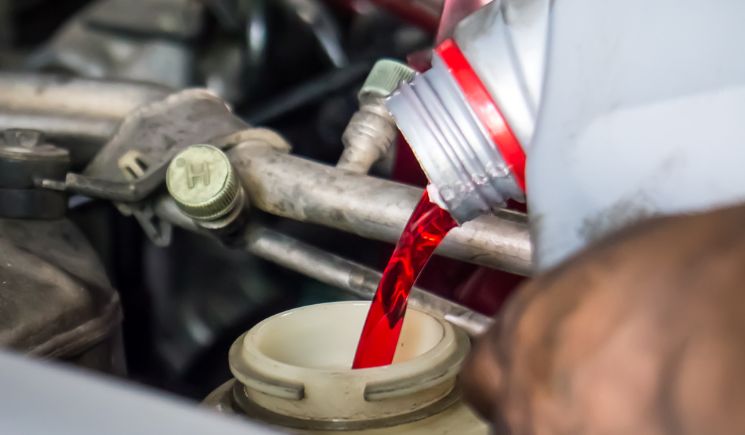The Nissan Altima is a world-famous midsize sedan because of its comfortable and responsive handling.
Many models of the Altima, particularly in recent years, have been in the market with a continuously variable transmission (CVT).
Maintaining your Altima’s CVT with regular fluid changes is vital to its performance and longevity.
But how much of CVT fluid does your Altima needs?
Checking Your Altima’s Factory CVT Fluid Capacity
The specific fluid capacity can vary depending on your Altima’s:
Model Year
- 2002-2006 models: 8 quarts
- 2007-2012 models: 9.2-9.3 quarts
- 2013-2018 models: 8.9-9.1 quarts
- 2019+ models: 9.3 quarts
Refer to your owner’s manual for the exact CVT fluid specification for the model year of your Nissan.
Engine Type
- Altimas equipped with 4-cylinder and 6-cylinder engines can have slightly different capacities.
- Therefore, always check the manufacturer guidelines for the ideal fluid capacity for your engine.
Understanding When a Fluid Change is Needed
Routine CVT fluid changes are crucial in every 60,000 miles in most models.
Signs you may need an immediate fluid changes includes:
Slipping Transmission
- A slipping sensation when accelerating points to low fluid levels or worn-out fluid.
Jerky Shifts
- Harsh or delayed shifts between gears that indicates problematic transmission fluid.
Burning Smell
- An overheated transmission has a distinctive burning odour that requires for a fluid replacement.
- Consult your owner’s manual and a transmission specialist for the recommendations on your Altima’s optimal CVT fluid change schedule.
- This is because proper fluid capacity levels leads to a smooth, reliable transmission operation.
Understanding Your Fluid Options
Nissan recommends using only genuine Nissan CVT fluids, such as:
Nissan NS-2 CVT Fluid
- It is a formulated special fluid for Nissan CVTs after 2014 models.
- This fluid ensures proper friction characteristics to avoid slippage.
Nissan NS-3 CVT Fluid
- It is an engineered fluid type for older Nissan CVT transmissions, which were built before 2014.
- It contains conditioning additives to prolong transmission life.
- While aftermarket fluids may meet specifications, the OEM Nissan CVT fluid is proven to be the ideal formulation for your Altima’s transmission over the long run.
DIY CVT Fluid Change Tips
Changing your own CVT fluid is an intermediate DIY job, but you can save on shop repair bills if you manage to do so.
Be sure to:
Check the Transmission Pan Bolts
- Loose pan bolts can lead to leaks – inspect and tighten bolts if needed before a fluid change.
Examine the Magnet Inside the Pan
- The magnet collects metallic debris from worn internal parts. Significant debris indicates potential transmission issues.
Measure the Fluid Level Precisely
- Too much or too little fluid leads to shifting problems and contamination. Therefore, measure the fluid level accurately as you refill.
- With the proper fluid capacity filled by using 100% genuine Nissan CVT fluid, your Altima’s transmission will shift smoothly for years to come.
- Make sure to consult your technician if you have questions about maintaining your CVT properly.
Improving the Longevity with Regular Fluid Changes
- The best way to maximize the Altima CVT transmission life is through regular scheduled fluid changes:
Consult the Maintenance Minder
- Follow the calculated maintenance schedule programmed into your Altima based on driving conditions.
Severe Driving Duties
- If you frequently tow or engage in rideshare services, change the fluid more often than the recommended intervals.
Fix Leaks Immediately
- Seemingly small leaks can lead to costly transmission damage if left unchecked.
- Stay ahead of potential transmission issues with good preventive maintenance by using the specified type and quantity of factory-approved fluid.
- If you do so, your CVT will reward you with reliable function for years of driving.
FAQs About Nissan Altima CVT Transmission Fluid Capacity
Q: What is a transmission flush, and is it recommended for my CVT?
A: A flush machine connects to the transmission to circulate fresh fluid until the old fluid is fully extracted is known as the transmission flush. This is more thorough than a drain and fill. However, for CVTs, Nissan cautions against using flush machines as pressure variations during the process could potentially damage the internal components.
Q: What mistakes could lead to transmission damage from a CVT fluid service?
A: Overfilling or underfilling fluid, failing to replace the filter, using additives/sealers, or improper disposal of old fluid are all mistakes that could negatively impact your CVT transmission’s operation and longevity.

